Secure Artificial Intelligence
Tinkle Chugh



























































































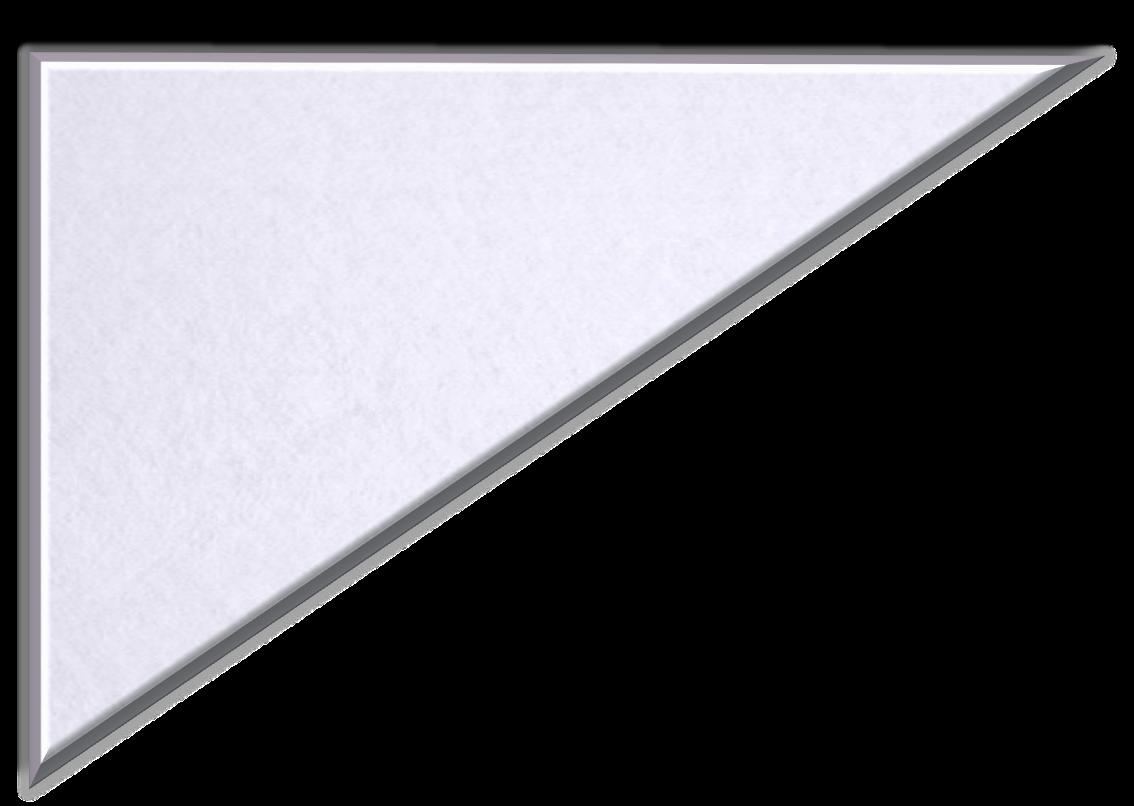

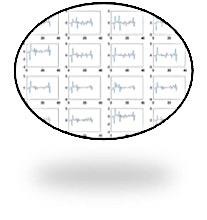
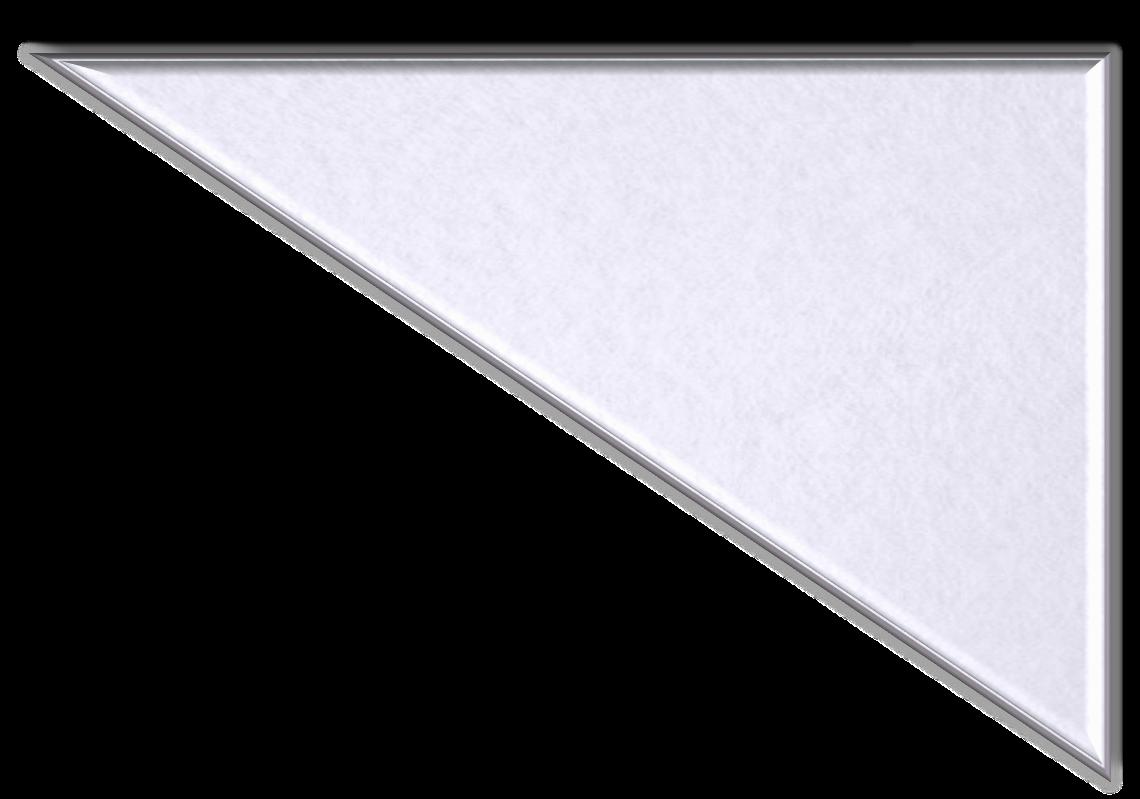















Data science involving machine learning and artificial intelligence is one of the hot topics these days. In last few years, many advancements have been done utilizing the data of citizens e.g. through social media platforms. The main question here is: Is the process of utilizing the data secure or can we believe the social media for not misusing the data? By this image, I want to show that the data is an open envelope which cannot be or almost impossible to seal. We as data scientist have an ethical duty to develop and use the technology so that we do not misuse the data. In my research, I develop and utilize machine learning algorithms for utilizing citizen weather station data. My job is to make sure that I handle the data securely and develop my algorithms to benefit citizens.


































































Adolfo de Sanctis
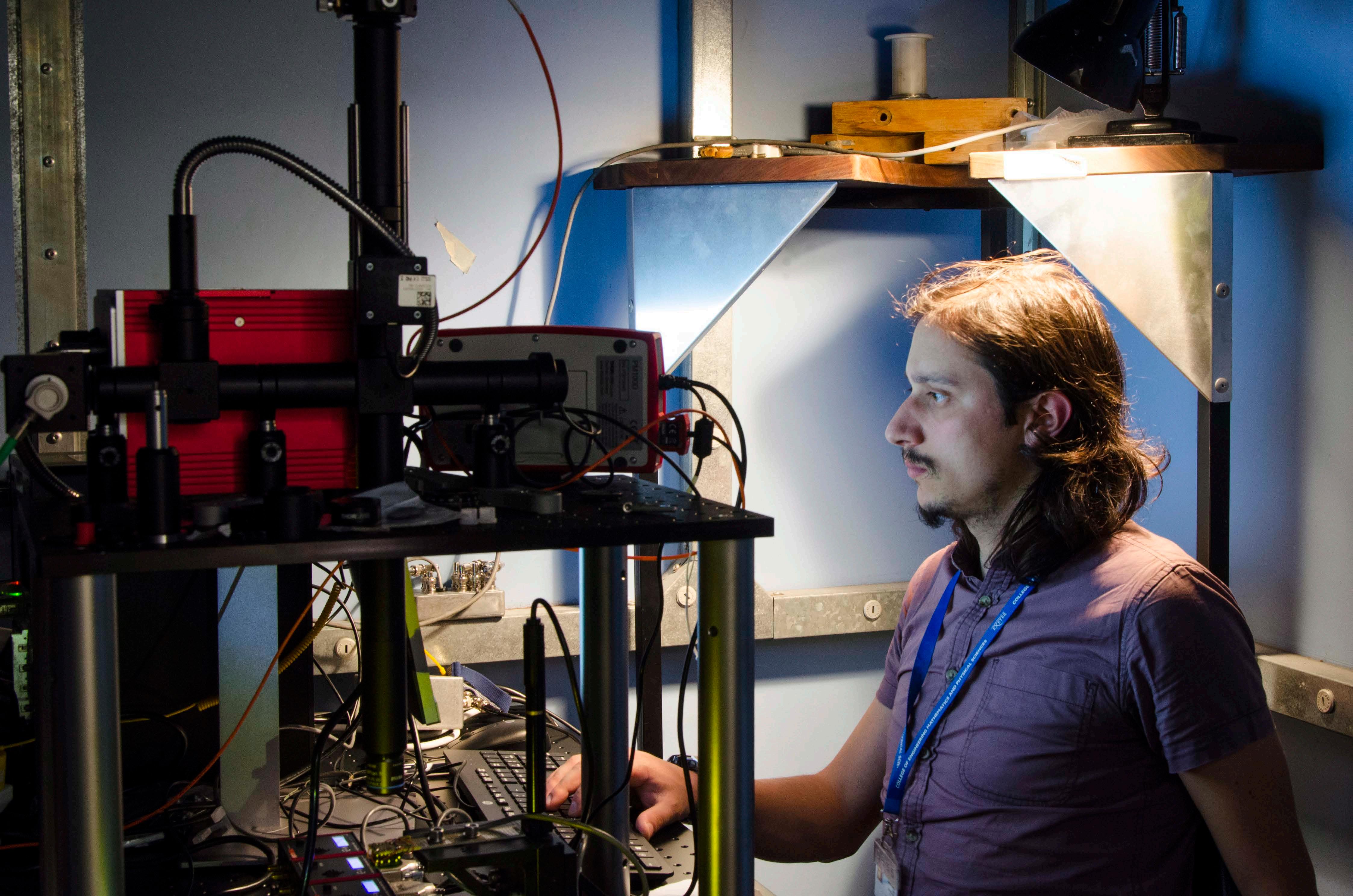
The solution to some of the challenges of the world, such as clean and renewable energy, and the creation of new technology starts from a laboratory in which basic natural phenomena are investigated. In my research I study how light interacts with matter to realise more efficient solar panels. Although working with solar panels seems to be an outdoor activity, research is actually performed in a dark room, where an experimental apparatus composed of lasers, optical fibres and cables is put together to investigate the intimate nature of light-matter interaction. In this self-portrait, I photographed myself working on one of such experiments, surrounded by technology to create new one.

Tony Lidington
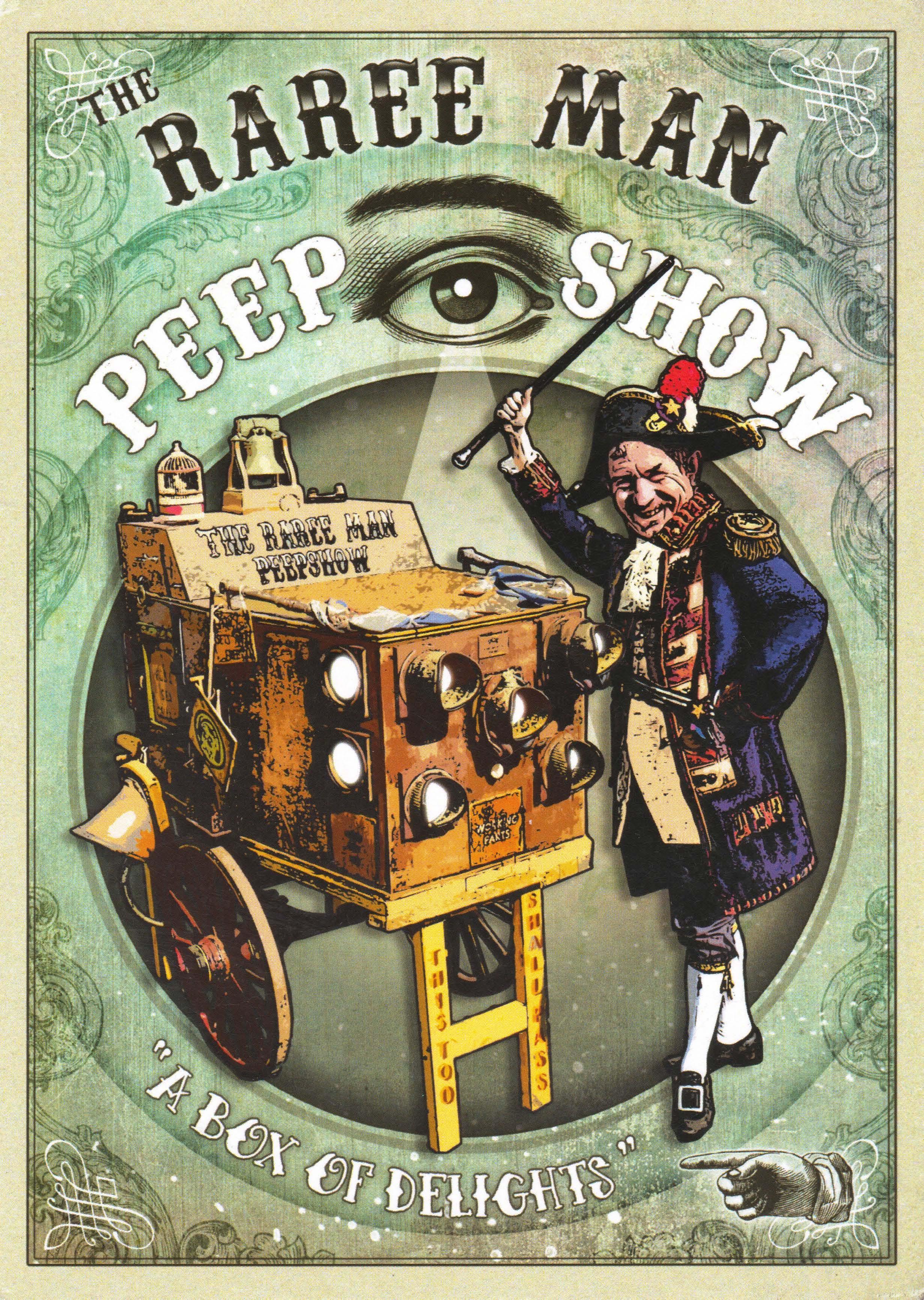

‘The Raree Man & his Peepshow’ is a project of embodied research through practice, which uses pre-cinematic forms of storytelling and modern technologies in contemporary public contexts: in the picture, you can see the peepbox, with its 9 peepholes, inside which is a miniature, working Georgian theatre. The contraption combines 18th century conventions and mechanisms of theatre & puppetry, with 21st century technologies such as sonic soundscapes, lithium batteries and projection mapping. Dr Tony Lidington (he’s the chap in the costume with a hat and stick,) has been working in collaboration with Exeter University’s Drama department, the English department, the Bill Douglas Cinema Museum and RAMM in delivering a variety of projects with his Peepshow – exploring public space, public engagement and the cultural legacy of popular entertainment forms, at festivals and events throughout the country... and providing heaps of family fun as well!
Gemma Anderson

Starting with instructions for an ‘origami embryo’ modelling some of the early stages of the development of a chick embryo by a sequence of folding, joining (stapling) and cutting sheets of paper. We re-model the embryo, based on these instructions but using a mathematical method called ‘Morse Theory’. This work is part on a three year AHRC project at the UoE called ‘Representing Biology as Process’ www.probioart.uk

Hasan Baig
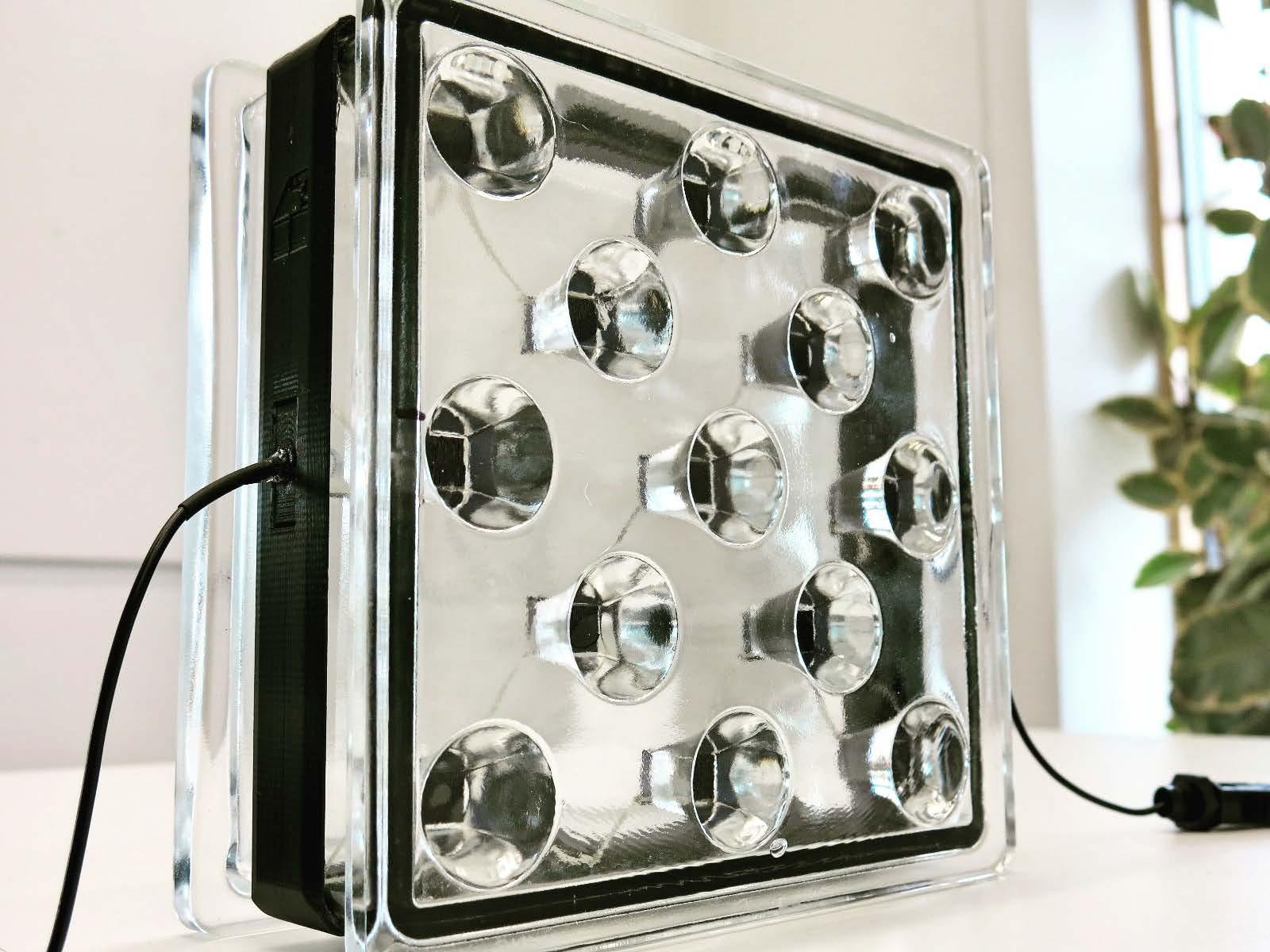
Buildings consume more than 40% of the electricity produced across the globe. The increasing trend in energy consumption could only be reversed if we provide solutions which are economically viable and can be integrated easily into our existing architecture.
Deployment of standard solar technology on rooftops is limited by the large area requirement and the negative visual impact. I have used my research on building integrated concentrating photovoltaics to develop “Solar Squared” which transforms the widely used Glass Blocks
into a multifunctional product that provides electricity, daylighting and improved thermal insulation. Onsite energy generation (OSG) will reduce energy losses associated with transmitting power from far and reduce dependency on the grid infrastructure. Aimed at the commercial and public construction sectors Solar Squared provides all the standard benefits of using glass blocks for building exteriors such as daylighting, protection, and structure bringing “zero carbon” efficient buildings closer to reality.

Richard Tennant

An image of a DNA purification being performed in the boot of a car on lake sediment that was extracted only moments before. Advancements in technology is enabling DNA sequencing to be performed on location, rather than the traditional method of bringing samples back to the lab for analysis. The ability to perform DNA purification
and sequencing onsite allows us to accurately measure the microbiome that is present in the sediment without the risk of degrading or contaminating the samples. This data enables us to build more robust reconstructions of past climates and allows a better understanding of how microbial communities are preserved in sediments.

Katie Smith
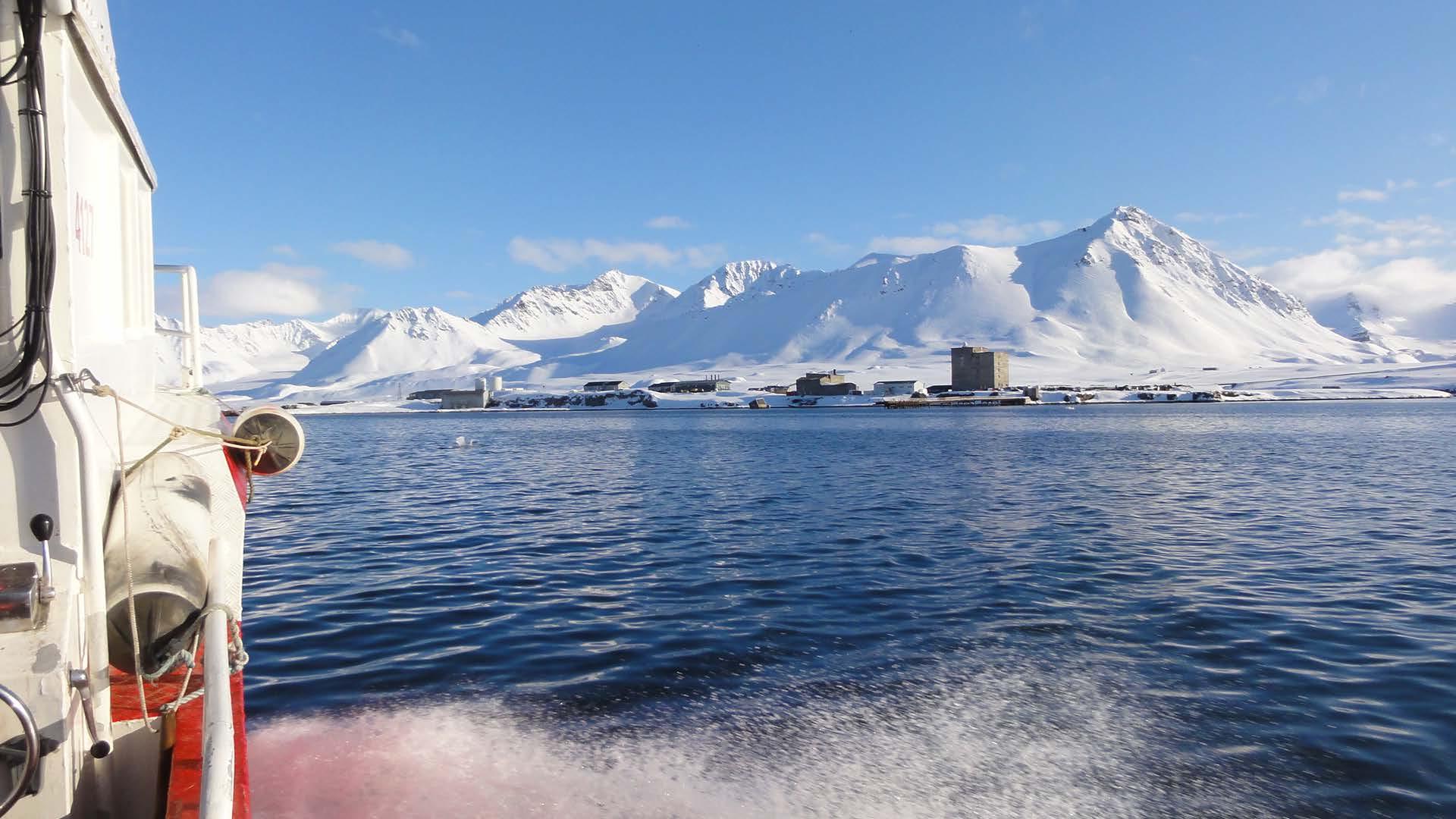
I have recently led a small team of scientists on a research trip to the Arctic, to carry out some ocean acidification and microplastics research. The trip was part of a collaborative project between the University of Exeter, Plymouth Marine Labs, and an outreach company named Digital Explorer. We also had support from the Natural Environmental Research Council and the British Antarctic Survey. We spent long days out on the water sampling in freezing cold and snowy conditions. Often, as we came back to land for dinner, the sun (which had hidden all day) would come out. This photo shows us speeding back to the research village, Ny Ålesund, in time for dinner and with the sun finally out after a successful day of sampling in the fjord.

Katie Smith
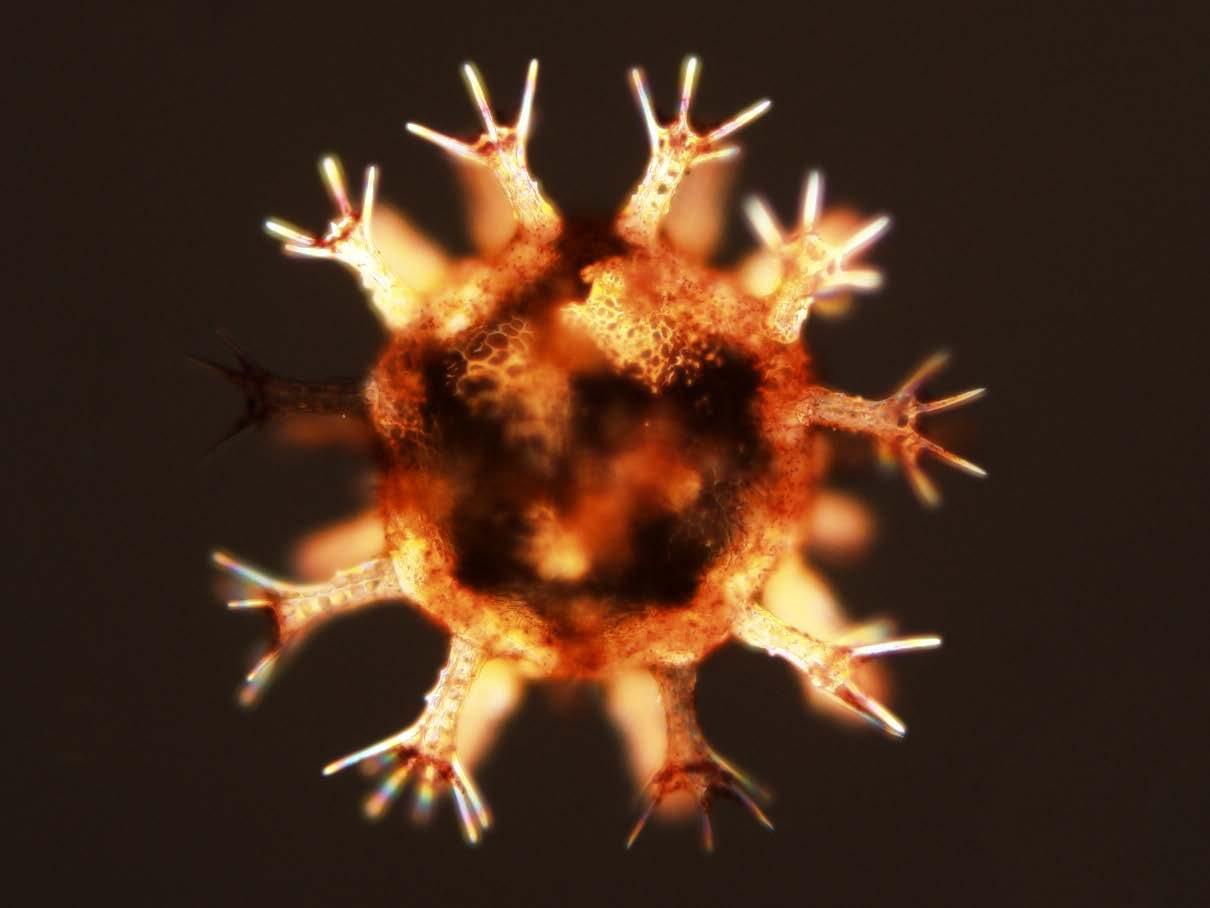
My research looks at how Ocean Acidification (OA) affects reproduction and development in marine invertebrates. I recently carried out some work on an Australian sea urchin (Heliocidaris erythrogramma). My research was looking at how different individuals responded to OA: did all individuals perform badly under ‘future ocean’ (low pH) conditions, or did some individuals perform better, making them good candidates for sustainable future populations.
My image is of a juvenile (4 day old) sea urchin which has developed in ‘future ocean’ conditions. In the image you can clearly see the calcified skeletal structure of the sea urchin spines and test. This juvenile has developed just as well under ‘future ocean’ conditions as its siblings did under ‘today’s ocean’ conditions.

Katie Smith
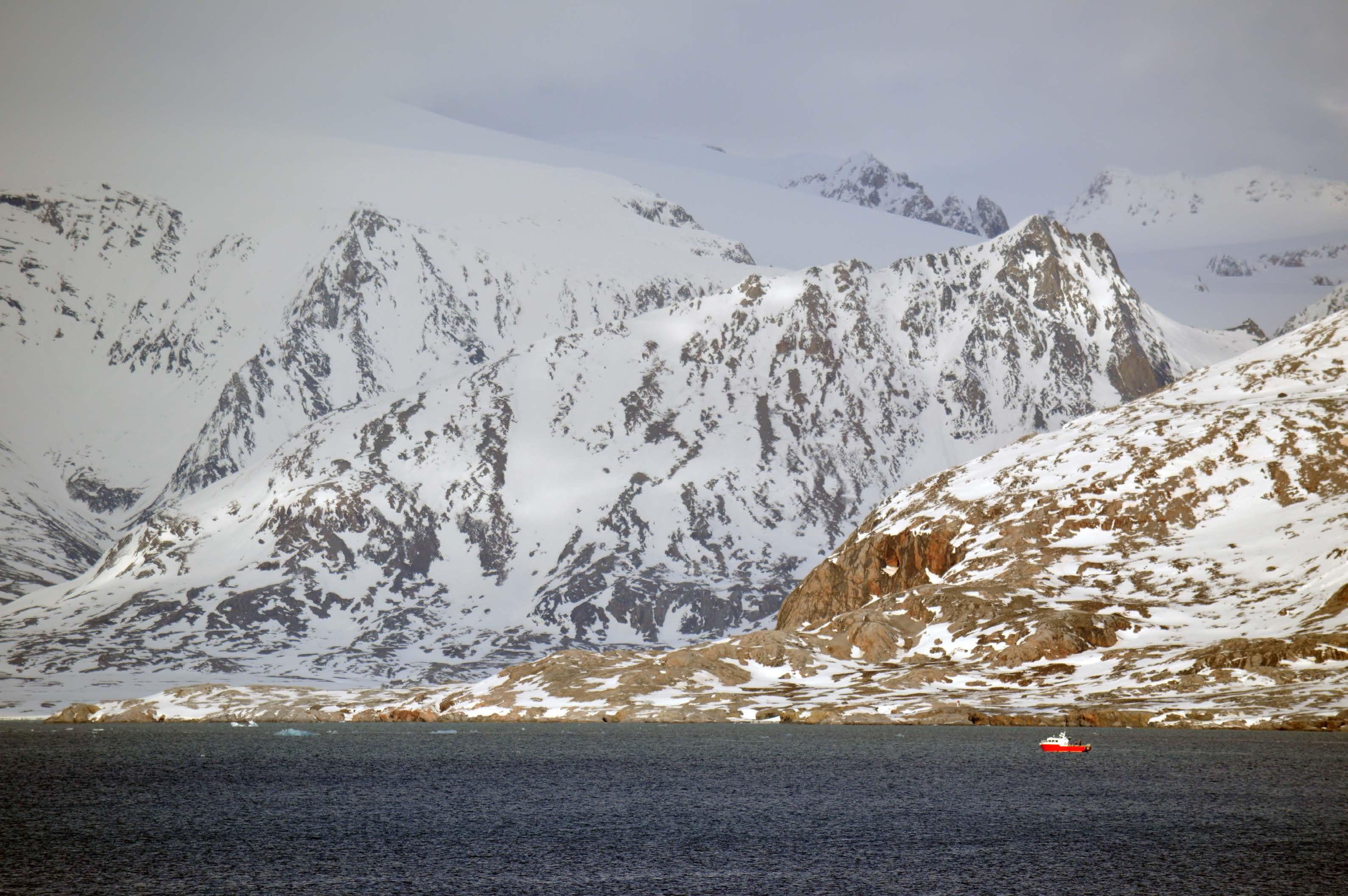
I recently led a science team as part of a collaborative project in the Arctic, bringing together the University of Exeter, Plymouth Marine Labs, and an outreach company named Digital Explorer. Our project also had support from the Natural Environmental Research Council and the British Antarctic Survey. The image shows some of my team out sampling for microplastics on our small orange research vessel, the Tiesten. They are in the middle of Kongsfjorden in north east Svalbard. I love this image because it shows the vastness of the beautiful mountains that surround the fjord in relation to our little 10-meter research vessel. The research vessel also gives a scale for the ‘small’ ice-bergs (or growlers) that are ahead of the boat, barely visible but around the same size as the boat itself.

Laura Kelley

Male bowerbirds build bowers that they decorate with coloured objects to woo females. Great bowerbird Ptilnorhynchus nuchalis males go one step further and use visual trickery to manipulate their attractiveness to females. The interior walls of the bower, where the female stands to watch the male display, are lined with red sticks that alter the colour of light inside the bower. This affects the female’s colour perception of the decorations displayed by the male. Males also lay a ‘patio’ of objects, seen in the foreground of this photo, that are arranged by size. This arrangement creates a forced perspective illusion that also affects female perception. We use a variety of tools to understand what females see during courtship, including avian visual models of colour perception, and reconstructing display geometry from the female’s point of view using photos and videos.

Michael Flexer
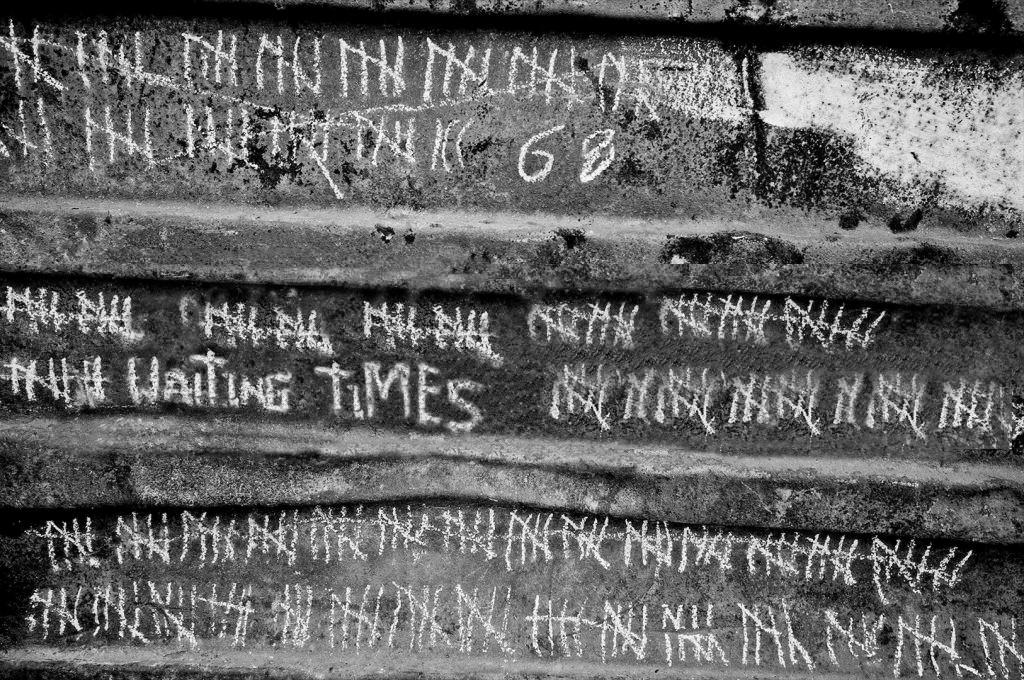
The image is a piece of promotional art for the Waiting Times project website. I am the publicly engaged research fellow on the project, and fundamental to my research is the belief that public engagement is not some discrete act of consultation or dissemination that happens before or after the research, but constitutes the very way in which the research is done. My research questions and the modes of engagement and intervention with various public(s) will be developed in dialogue with those public(s) being engaged; every stage in the process is co-created and collaborative. In this spirit, the initial images on the project website are a provocation or the start of a conversation about visual representations of temporalities of care and illness, and it is the aim that these images will be critiqued by our engaged public(s) and ultimately replaced by images generated in partnership with them.

‘I’m glad I came outside’
Noreen Orr
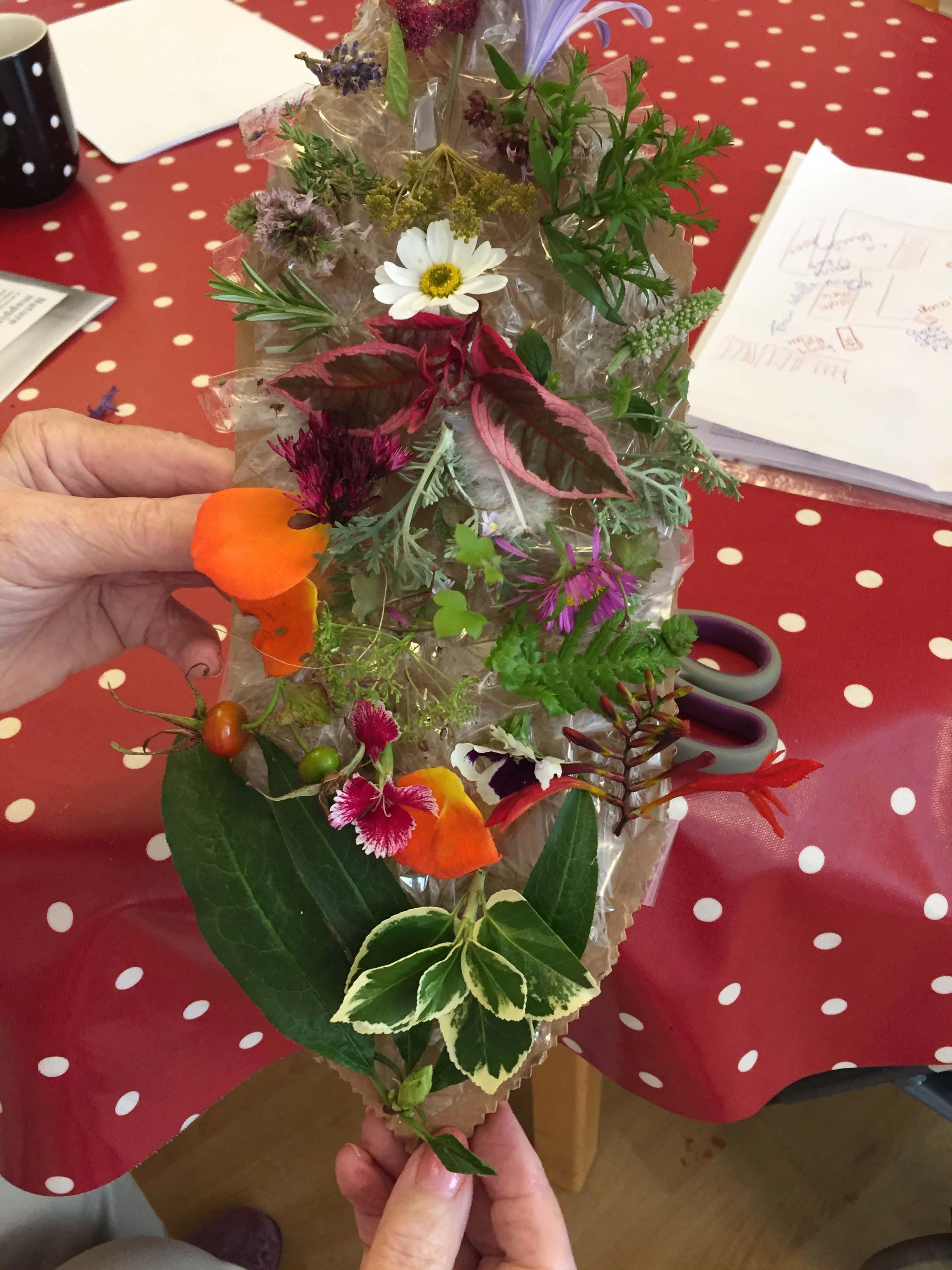

Care home residents can often find it difficult to experience nature and the outdoors and the ‘My Nature’ project is a collaborative research project between University of Exeter researchers, Sensory Trust and care homes to enhance older people’s engagement with the natural environment. ‘My Nature’ comprises a number of nature-based activities which care home staff can use to engage their residents with nature, both outdoors and indoors.
This image shows a nature palette created by a care home resident as she wandered around the garden. Collecting for the nature palette opened up opportunities for sharing stories on favourite flowers and herbs, and reminiscence about ‘past’ gardens. In this photograph the resident proudly displays her handiwork and observed that she was glad she had gone outside. The findings from this project will be shared with residential and nursing care professionals to encourage and inspire them to engage residents with nature.
Pramod Kumar
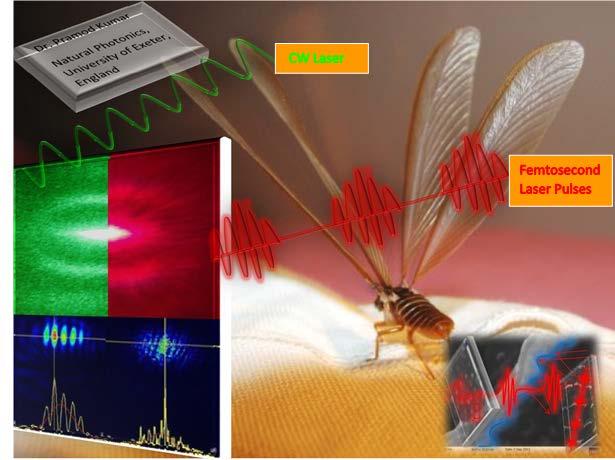
Nature has developed a gorgeous architecture on various insect wings surfaces. These natural complex photonic architectures at various length scale (nm-µm) with various geometries have aroused much interest in the scientific community for their promising impact on the manipulation and control of light for various Biophotonic applications. Seeing inspiration from nature, we have naturally found deeply grooved blazed micro-grating
arrays on various transparent insect wing surfaces. While the direct use of natural bio photonic structures for optical applications is limited since they are composed of biopolymers with rather poor mechanical and photo stability, but the investigation of these structures allows both a better understanding of the host species evolutionary development and provides intriguing templates for biomimetic applications (reverse engineering).

Rebecca Abbott
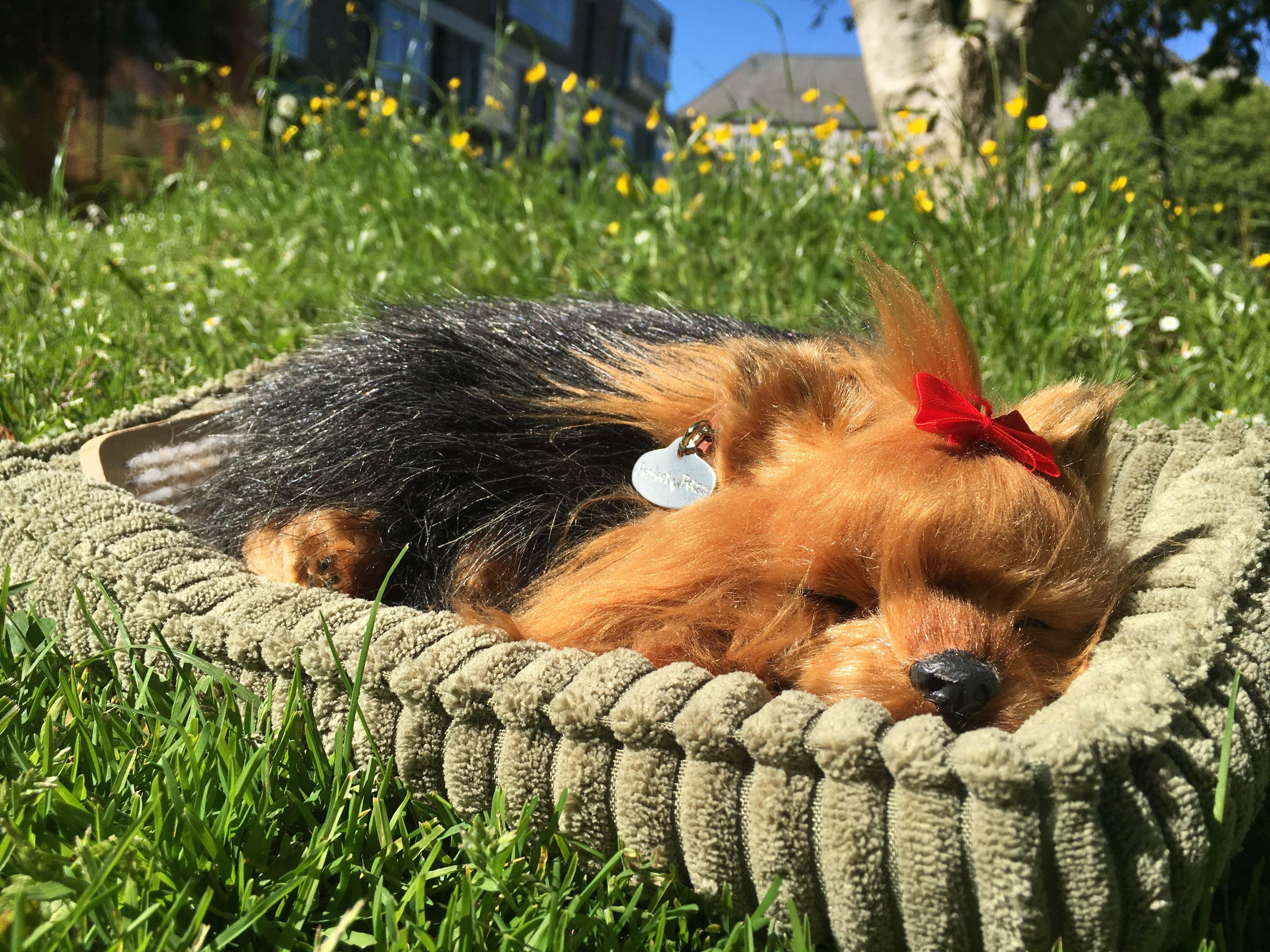
Synthia is a robotic dog. What you cannot see in the photo, is that Synthia is breathing: you can feel and hear it too. She comes with a grooming brush and sleeping mat for her to rest in. Synthia – as we have named her – is just one example of a multitude of robotic pets that are being trialled in care homes; which range from purring cats, blinking baby seals and walking plastic puppies. The value of robotic pets, claims some research, is that they
come with no health and safety risks and give residents something to care for and love, and may be meaningful for those unable to bring their pet into a home. But is this borne out in practice? Our research will gather all the evidence on this topic and see how beneficial robotic pets really are and if there is a place for them in our future.

Senthil Gurusamy
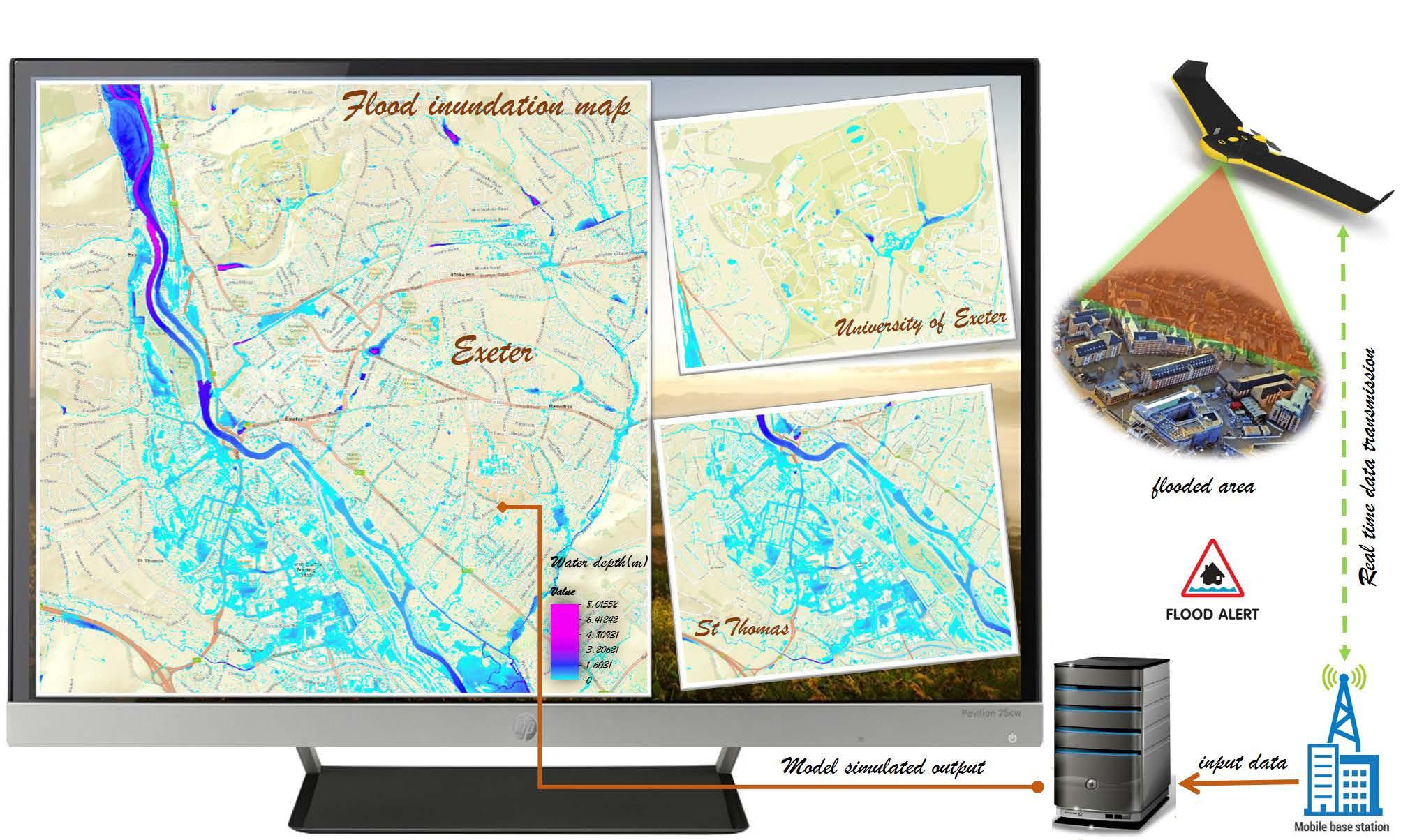
Around 5 million people live in flood risk areas in England and Wales, with one in six homes at the risk of flooding. The economic losses resulting from damage caused by flooding far outweigh the costs associated with other natural disasters. Our ongoing research work focuses on using unmanned aerial systems (UASs) to collect and collate relevant information about an unfolding flooding disaster. In this regard, a computationally-efficient urban flood prediction model has been developed to identify locations vulnerable to flooding, generate emergency evacuation routes and update them as a flood progresses. The image shows the model simulated flood depth occurred in Exeter on the evening of 16th October 2014. As per Met Office report around 19mm of rainfall was recorded in Exeter between 7pm and 8pm, which let to intense flash flooding in many parts of the city.

William Kay

Zymoseptoria tritici is the most economically important pathogen of wheat in temperate climates. Treating this fungus alone costs the EU an estimated 1.3 billion euros a year. GFP (green fluorescent protein) tagged strains have been produced which aid in understanding the fungal life cycle, helping to theorise improved methods of control. The picture shown, ‘Green fluorescent Fido’, came together purely by chance and highlights the human ability to find shapes in random patterns. The image is a great example of collaboration between groups and departments at Exeter University. The image was taken by William Kay while completing a PhD with Prof. Sarah Gurr, the gfp tagged strain was produced by Sreedhar Kilaru and Prof. Gero Steinberg, and training on the SP8 confocal microscope was undertaken by Dr. Helen Fones, with help from Christian Hacker and Ana Correia at the Exeter Bioimaging Department.

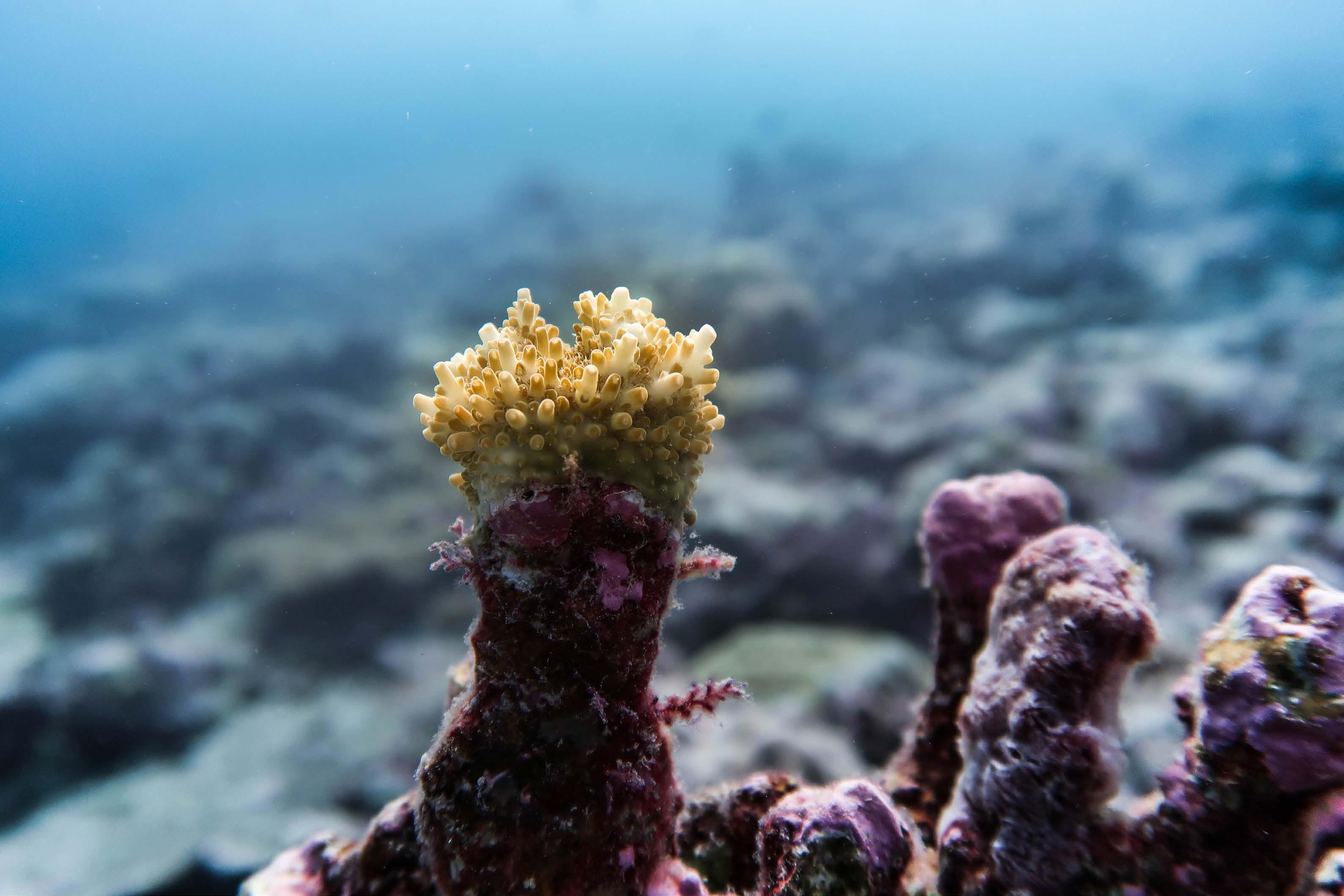
This young coral colony settling on the tip of a dead coral skeleton symbolises hope for the recovery of once glorious reefs. I am on a research cruise in the Indian Ocean, investigating the carbonate budgets of coral reefs around the Chagos archipelago. Our results provide a metric of reef “health” in terms of whether it is growing or eroding. The sites we visited show dramatically reduced coral cover and carbonate production rates due to a severe bleaching event in 2016. On the upside, there are hundreds of young coral colonies. In an area that is so remote, a fast recovery of reefs over the next 5-10 years may be possible. But our results are also a warning sign that we should work harder for a sustainable future, as the continuous emission of CO2 threatens coral reefs around the world with more frequent bleaching events and little time for recovery.

Vicki Gold
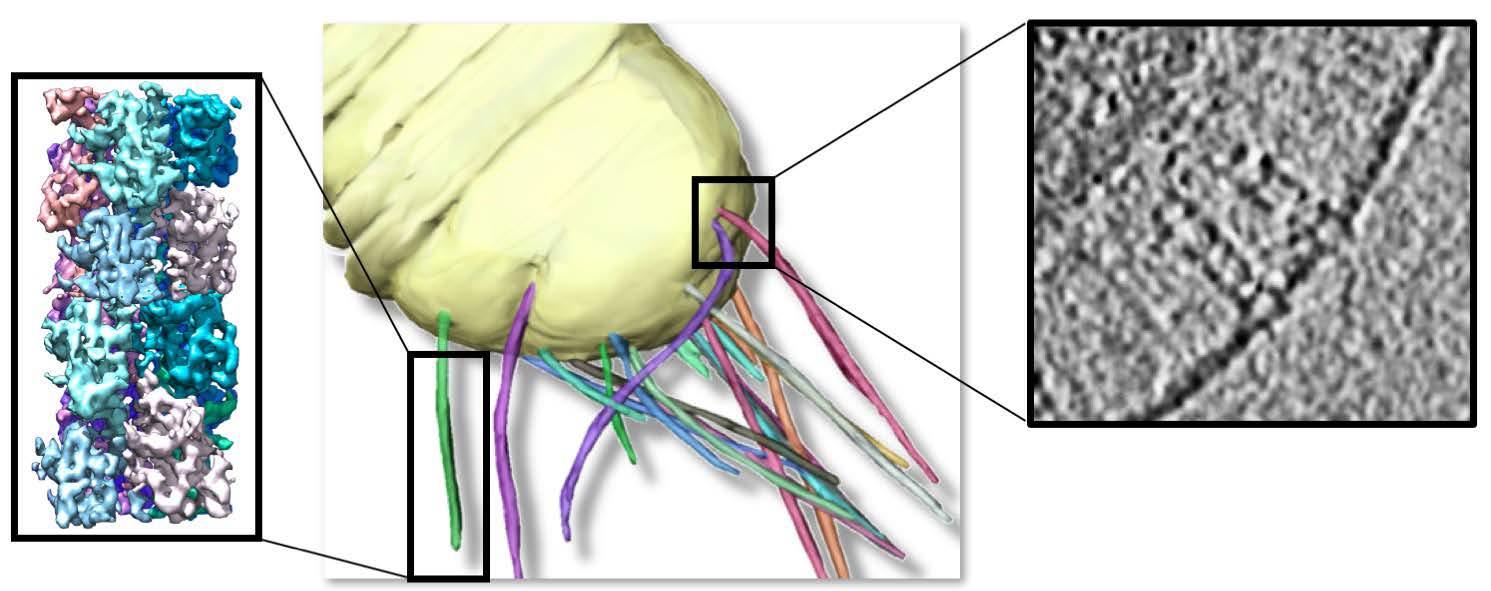
Type IV pili are extracellular protein filaments that are used by bacteria to “walk” along surfaces in a form of motion referred to as twitching. Additionally, type IV pili are involved in cell adhesion, communication, biofilm formation and have been implicated in DNA uptake, a process which can lead to the development of antimicrobial resistance. We use a combination of methods focussed around the cutting-edge technique of electron cryo-microscopy (Nobel Prize in Chemistry, 2017) to understand the roles that type IV pili play in bacteria, in particular how they move within our environment and undergo genetic adaptation. In 2015, we determined the structure of the type IV pilus assembly machinery in whole cells (boxed, right)1 and more recently have determined structures of the pilus fibre (boxed, left)2. This reveals fascinating new insight into the complex workings of a bacterial motility machine.
References Gold, V.A.M. et al. (2015). Elife 4. doi: 10.7554/ eLife.07380.
Selvaraj, M. & Gold, V.A.M. et al. In preparation.

Witek Tatkiewicz
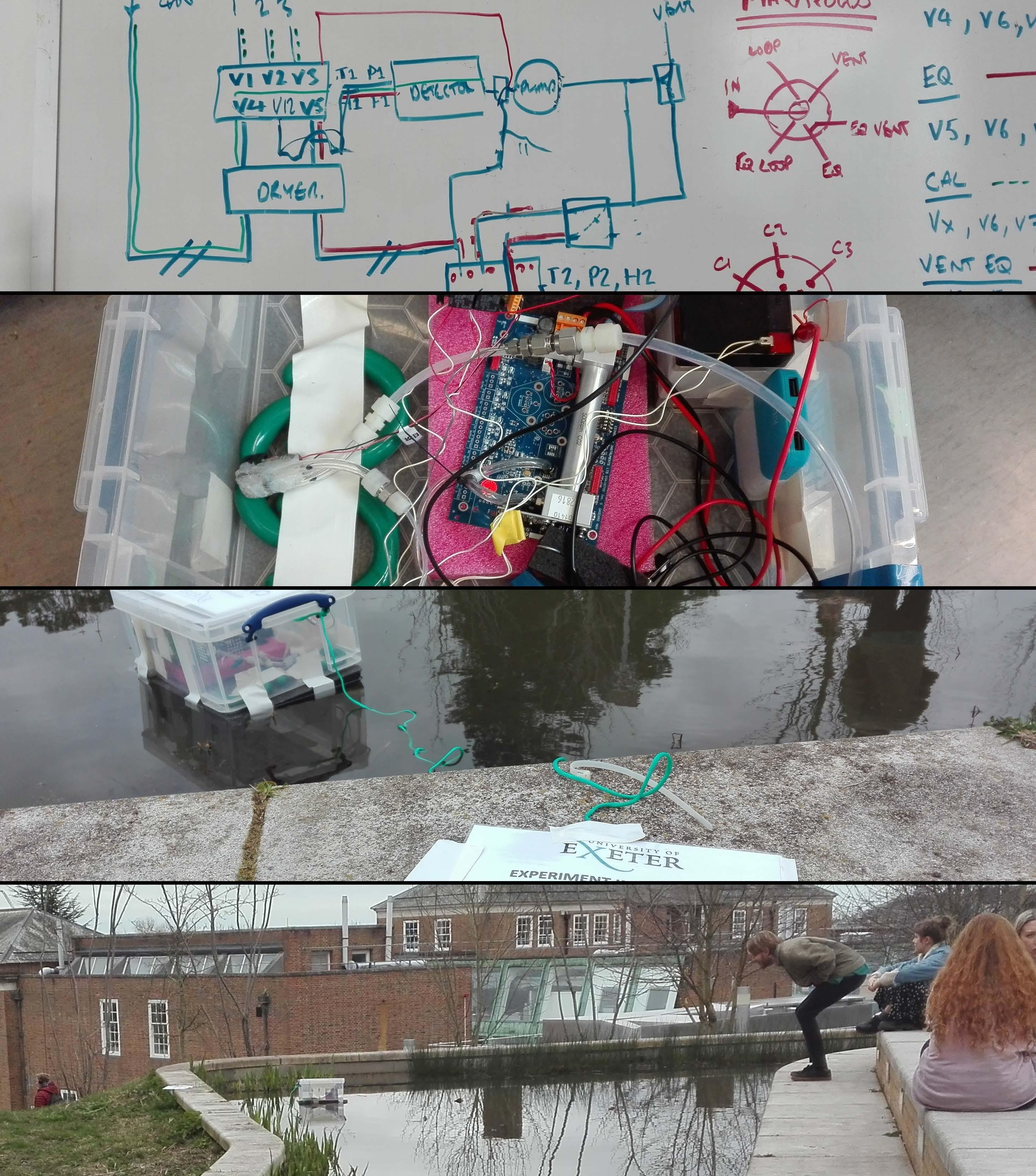
Snapshots above tell the hitherto story of CAPASoS Project. It aims to develop instrument capable of autonomous measurements of CO2 levels in harsh environment of oceans’ winter. It was conceived in order to cast light on annual global carbon budget in Exeter Atmospheric and Ocean Science Group at College of Life and Environmental Science.
From brainstorming over drawing board, through joy of prototyping, the device has reached stage of early testing. So here it is, the third fully operational iteration of the instrument: floating – indeed, autonomous –yes, measures CO2 – sure, Southern Ocean –well, not quite.
The story goes on, there are still challenges to be overcome. But even in current shape the project may serve as source of inspiration. Let’s be honest: would you believe me, if I told you that I launch plastic box on campus pond for living?
